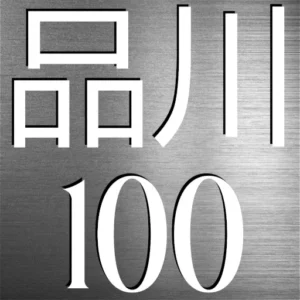The Tokai-ji was created early in the Togugawa Shogunate as a Zen sect temple near the Tokaido road for a troublemaking monk Takuan. He got himself in a pickle then later on invented the pickle which took his name.
The Purple Robe Incident 紫衣事件
In 1615 second Shogun, Tokugawa Hidetada, to control the imperial court, established “the Laws for the Imperial Court” “Kinchu Narabi ni Kuge Shohatto” (禁中並公家諸法度) “. These were regulations set by the Edo Shogunate to restrict the actions of the Emperor, nobles and Buddhist temples, thereby strengthening the power of the Shogunate. The Laws for the Imperial Court remained unchanged until the end of the Edo Shogunate.
Among these 17 rules was rule 16, a restriction on bestowing purple robes to priests (a long standing rule that only the highest ranking people allowed to wear purple). It required that only the most virtuous of priests should be bestowed with a purple robe. Bestowing purple robes was also a source of income for the Imperial Court. The shogunate added this rule as they felt the Imperial Court was bestowing them too freely.
Tokugawa Hidetada abdicated in 1623 the Tokugawa Iemitsu became the third shogun. However, Hidetada continued to exert significant influence over the government.
In 1627 Emperor Go-Mizunoo granted permission for priests from two Kyoto temples, Daitoku-ji and Myōshin-ji, to wear purple robes. Tokugawa Iemitsu, declared the Emperor’s decree invalid as he had not consulted with them beforehand. The confrontation was so severe that it is believed to have contributed to Emperor Go-Mizunoo’s decision to abdicate the throne.
Takuan Soho was formerly head abbot of Daitoku-ji (‘temple of great virtue’) a premier Zen temple. He together with the senior priesthood of Daitoku-ji and Myōshin-ji protested this action. He was arrested and exiled to the Dewa Province (modern-day Yamagata Prefecture and Akita Prefecture).
Amnesty
In 1632 Tokugawa Hidetada died and a general amnesty was issued. Thanks to the efforts of Tenkai, a monk and trusted advisor to the shogunate, Takuan and others who had been involved in the Purple Robe incident were pardoned. Takuan returned to Daitoku-ji. Tenkai arranged an audience for him with current Shogun Tokugawa Iemitsu in Kyoto. Impressed by his intelligence and insights Iemitsu summoned him regularly to Edo for consultation and, at Iemitsu’s summons, went to the castle to preach Zen.
Tokai-ji: A Temple Southeast of Edo
Travellers heading towards the capital would want to buy charms and amulets, and those arriving into Edo would need to offer thanks. In 1633 the shogunate decreed a temple for this purpose and they gave it unusual name: Tokai-ji (temple of the Tokai[do]) after the road. Among Edo’s main temples, Zen was not yet catered for, so the Tokai-ji was affiliated with that school. In 1638 Tokugawa Iemitsu unveiled his plan and invited Zen monk Takuan Soho as first abbot. In 1639 Tokai-ji Temple was built on the southern foot of Gotenyama. (Takuan is thought to have secured the most famous garden architect of the period, Kobori Enshu, to lay out the Zen temple grounds, and if that is true, it was Enshu’s only work in Edo.)
At its peak Tōkai-ji had a vast temple area that extended over 47,666 tsubo1. This means that Tōkai-ji covered an area of approximately 157,000 square meters or 1.7 million square feet. Equivalent to 125 Olympic size swimming pools. It was the third-largest temple in Edo, second only to Kan’ei-ji in Ueno and Zojo-ji in Shiba. It had sub-temples, as many as 17 at its peak, some of which were built by powerful Daimyo clans.
In 1694 a fire broke out from Shinagawa-juku and the temple was completely destroyed. However, Tokugawa Tsunayoshi, the fifth shogun, acted swiftly. He and his mother, Keishōin, oversaw the immediate reconstruction of the temple. As a result, Tokai-ji was transformed into a grand complex (referred to as a daiga-ran).
After Takuan’s death in 1645, the Daitoku-ji sect assigned high-ranking monks of purple or higher rank to the temple on a rotating basis for one year at a time, and also entrusted them with the responsibility of overseeing the sect’s temples in the Kanto region.
To get an idea of how it looked, the image below is a composite of 3 woodblock prints by Edo artist Hasegawa Settan (長谷川雪旦) published in book 4 of Edo Meisho Zue (江戸名所図会) “Guide to Famous Edo Sites” 1830.

On the hilltop to the left marks the burial place of abbot Takuan (highlighted in purple). It’s now known as Oyama cemetery. The Meguro River (highlighted in blue) from the top left to bottom centre is largely obscured by horizontal lines drawn to represent clouds in a technique peculiar to Japanese-style painting. Midway along the stream, a bridge, Yojin-bashi (highlighted in green) spans the river amid clusters of subsidiary temples on both sides. Off to the right of the bridge is the double-roofed main hall (highlighted in red). This is likely where Shinagawa Gakuen stands today. On the right on the hill is Shinagawa Shrine (highlighted in cyan) with its familiar steep flight of steps.
In 1873 as part of broader political changes during the Meiji Restoration, which aimed at modernization, Westernization, and the end of Tokugawa rule, Tokai-ji’s lands were confiscated by the new government, leading to its decline.
The current temple named Tokai-ji corresponds to the former Gensei-in (originally called Rinsen-in), one of Tokai-ji’s sub-temples. Nearby to this, crossing the Meguro River, is the current Yojin-bashi bridge. The only other sub-temples that remain are Shun’usan (now Shun’usa-ji Temple), Seiko-in, and Kougen-in (now relocated to Karasuyama, Setagaya Ward). HOwever, the the cemetery of former Kougen-in is behind Shinagawa Shrine and has the grave of politician Itagaki Taisuke.
The “Shinagawa 100 Scenes” that are within or adjacent to the temple grounds of the former Tokai-ji are:
- A tsubo is a traditional Japanese unit of area, equivalent to approximately 3.3 square meters or 35.5 square feet. ↩︎

